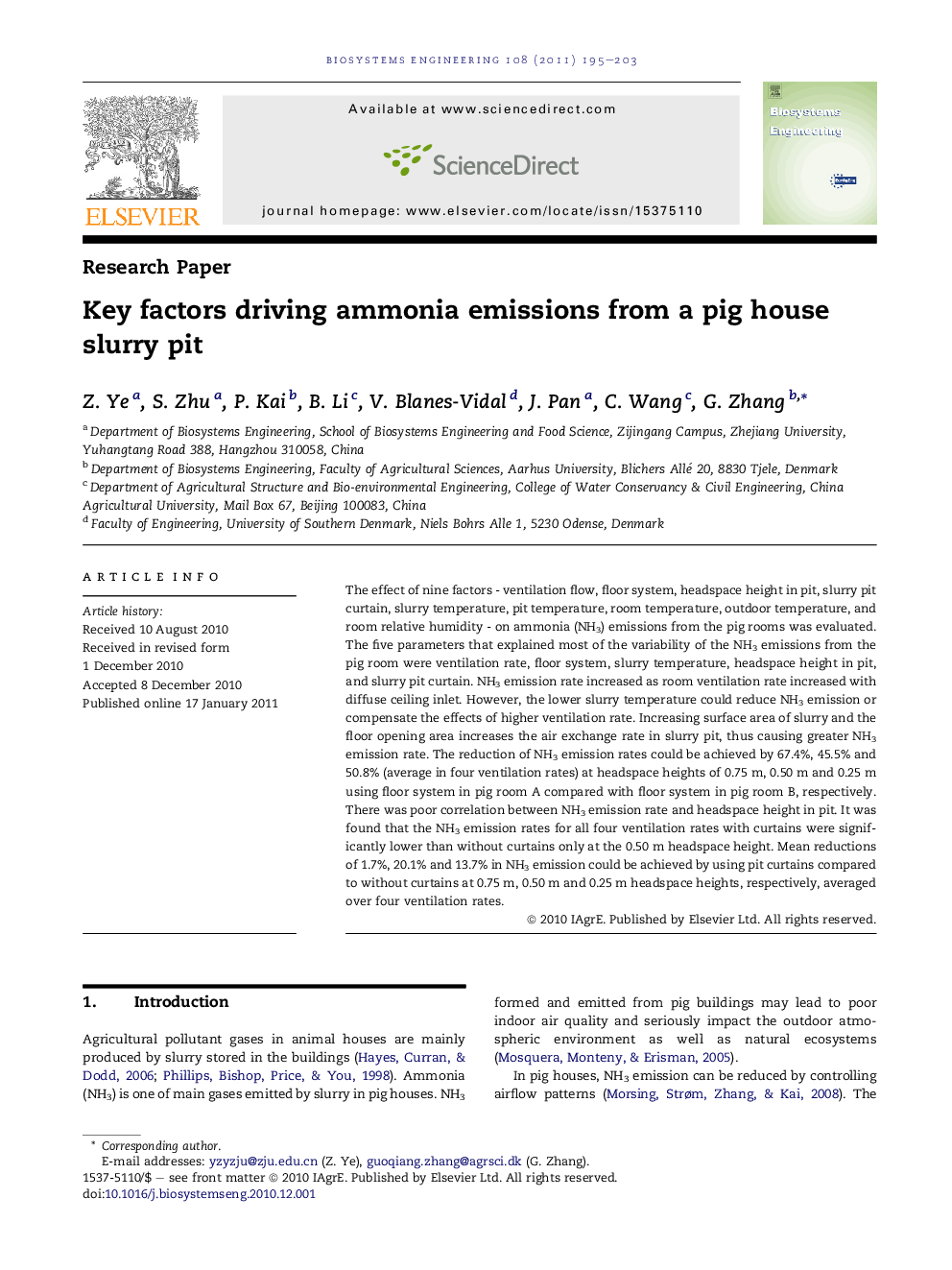| Article ID | Journal | Published Year | Pages | File Type |
|---|---|---|---|---|
| 1711697 | Biosystems Engineering | 2011 | 9 Pages |
The effect of nine factors - ventilation flow, floor system, headspace height in pit, slurry pit curtain, slurry temperature, pit temperature, room temperature, outdoor temperature, and room relative humidity - on ammonia (NH3) emissions from the pig rooms was evaluated. The five parameters that explained most of the variability of the NH3 emissions from the pig room were ventilation rate, floor system, slurry temperature, headspace height in pit, and slurry pit curtain. NH3 emission rate increased as room ventilation rate increased with diffuse ceiling inlet. However, the lower slurry temperature could reduce NH3 emission or compensate the effects of higher ventilation rate. Increasing surface area of slurry and the floor opening area increases the air exchange rate in slurry pit, thus causing greater NH3 emission rate. The reduction of NH3 emission rates could be achieved by 67.4%, 45.5% and 50.8% (average in four ventilation rates) at headspace heights of 0.75 m, 0.50 m and 0.25 m using floor system in pig room A compared with floor system in pig room B, respectively. There was poor correlation between NH3 emission rate and headspace height in pit. It was found that the NH3 emission rates for all four ventilation rates with curtains were significantly lower than without curtains only at the 0.50 m headspace height. Mean reductions of 1.7%, 20.1% and 13.7% in NH3 emission could be achieved by using pit curtains compared to without curtains at 0.75 m, 0.50 m and 0.25 m headspace heights, respectively, averaged over four ventilation rates.
Research highlights► Ventilation, floor type, and slurry temperature explained most emission variability. ► Air motion in and air exchange rate from slurry pit headspace affect emission. ► Slurry surface area in a pit channel significantly affects emission. ► Airflow rate in and emission from slurry pit can be reduced by using a pit curtain.
